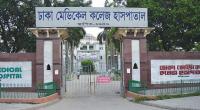 Militancy may be controlled within the country but it’s believed that radicals are active in the dark web. Also, they are using different apps and websites to send/receive protective text.
Militancy may be controlled within the country but it’s believed that radicals are active in the dark web. Also, they are using different apps and websites to send/receive protective text.
But the law enforcers and Bangladesh Telecommunication Regulatory Commission, BTRC, does not have the wherewithal to completely stop the web based communication of extremists.
Police say, with some logistical support, this can also be stopped for good.
Members of Ansar al Islam and Neo JMB are active in the dark web.
Dark web is the net based murky world behind the surface web; most of us use the latter where all information is open.
Usually, the dark side is used by intelligence organisations, criminals and traders of porn.
IT expert Tanvir Hossain Zoha says: “a special browser is needed to enter the dark web.”
Once radicals were active on social media platforms but due to regular vigilance of law enforcers, they now operate in the dark network.
Monitoring the dark side is difficult and the militants can protect their identity, added Tanvir.
By installing a TOR browser and other uncommon soft-wares, identity can be concealed.
In the dark net, militant organisations have their sites along with directions and instructions.
Police say that though militants are often not educated, they are IT literate and given in-depth training to operate all digital equipment.
Protective text is used along with self-designed applications, the police believe.
One official of the Counter Terrorism and Transnational Crime, says: “militants also have soft-wares to erase all their communication if caught by the law.”
In the Holey Artisan attack, militants used the mobile of one of the hostages, Hasnat Karim, and sent out photos using Wicker app.
IT specialist Tanvir says that if the ‘Nightmare’ software is used then all information from a phone can be wiped out.
More and more radicals are using the dark web; this can be stopped but efforts have to be made by BTRC, he added.
 Others
Others
41258 hour(s) 43 minute(s) ago ;
Evening 09:37 ; Tuesday ; Jul 01, 2025
Militants roam the dark web
Send
Amanur Rahman Roney
Published : 04:00, Jul 11, 2018 | Updated : 04:00, Jul 11, 2018
Published : 04:00, Jul 11, 2018 | Updated : 04:00, Jul 11, 2018
0 ...0 ...
/tf/
Topics: Top Stories
- KOICA donates medical supplies to BSMMU
- 5 more flights to take back British nationals to London
- Covid19: Rajarbagh, Mohammadpur worst affected
- Momen joins UN solidarity song over COVID-19 combat
- Covid-19: OIC to hold special meeting
- WFP begins food distribution in Cox’s Bazar
- WFP begins food distribution in Cox’s Bazar
- 290 return home to Australia
- Third charter flight for US citizens to return home
- Dhaka proposes to postpone D8 Summit
Unauthorized use of news, image, information, etc published by Bangla Tribune is punishable by copyright law. Appropriate legal steps will be taken by the management against any person or body that infringes those laws.
Bangla Tribune is one of the most revered online newspapers in Bangladesh, due to its reputation of neutral coverage and incisive analysis.
F R Tower, 8/C Panthapath, Shukrabad, Dhaka-1207 | Phone: 58151324; 58151326, Fax: 58151329 | Mob: 01730794527, 01730794528


